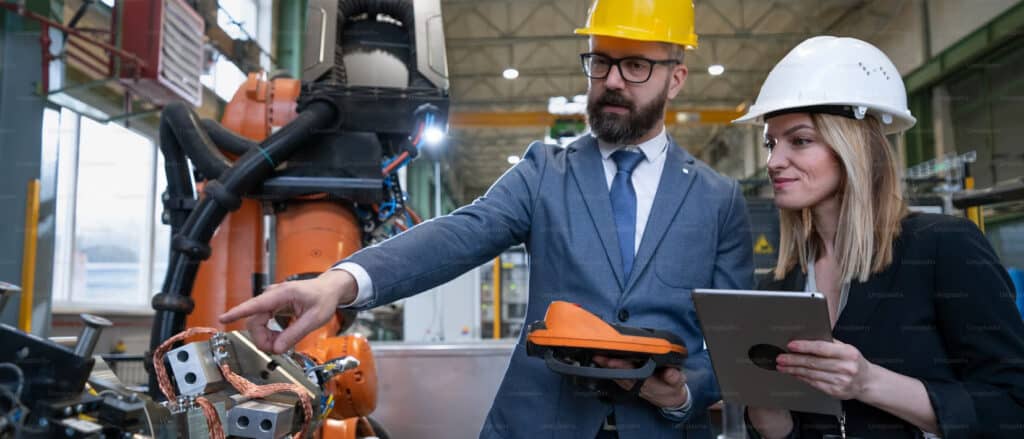The construction industry finds itself at a fascinating crossroads–where once the clang of hammers and the whirl of drills dominated, now bits and bytes are becoming equally important tools. Artificial intelligence (AI) and software technologies are not just knocking on the door; they have busted it wide open, promising a future where building projects are smarter, faster, and more efficient. This huge shift is flipping the script on everything we thought we knew about building and has everyone buzzing about what’s next.
AI and Software Leading the Charge
Just a few years from now, we might be looking at a construction site where AI-powered robots work alongside human beings, where project planning software predicts delays before they happen, and drones zip across the sky–mapping out terrain with precision. This is not a scene from a sci-fi movie; it’s the reality that AI and software technologies are carving out in the construction industry. They’re not just tools; they’re game-changers. By crunching data, automating mundane tasks, and optimizing workflows, these technologies are helping to keep projects on schedule and under budget. They’re the trusty sidekicks every construction project didn’t know they needed.
The Heart of the Matter: Efficiency and Safety
When we drill down to what’s really important, it’s all about getting things done better and keeping everyone safe while doing it. No one’s got time for delays or risky accidents. That’s where AI and software swoop in to save the day. They take a deep dive into the data ocean and spot trouble before it even hints at showing up, keep things moving efficiently, and make sure everything and everyone is exactly where they need to be. It’s like having a magic crystal ball that actually works. And it’s not just about trimming costs; it’s about creating a space where good ideas and safety get to hang out together.
Will Construction Tools Be AI-powered?
An AI-powered construction tool is essentially a device or software that leverages machine learning and data analytics to perform tasks that typically require human intelligence. This could range from predictive analytics for risk management, robotic automation for repetitive physical tasks, to real-time decision-making aids. AI in these tools is about analyzing patterns, learning from data, and making informed decisions or actions without constant human input.
Specific AI-Powered Tools Transforming Construction
- Autonomous Construction Vehicles: Much like self-driving cars, autonomous or semi-autonomous construction vehicles like excavators, bulldozers, and dump trucks are becoming a reality. These vehicles can perform excavation, material moving, and site preparation tasks under minimal human supervision, guided by AI that processes data from the vehicle’s surroundings to make real-time navigational decisions.
- Drones for Site Surveying and Monitoring: AI-powered drones are revolutionizing site surveying and monitoring by providing real-time, high-resolution images and videos. Equipped with AI, these drones can autonomously navigate over construction sites, collect data, and even analyze this data to identify progress, measure volumes, or detect potential safety hazards.
- Wearable Technology for Worker Safety: Wearables embedded with AI are being used to enhance worker safety on construction sites, because AI can predict potential health risks and alert workers and supervisors to take precautionary measures.
- Robotic Arms and Exoskeletons: AI-powered robotic arms are being developed for precise tasks like bricklaying, welding, or painting, tasks that require consistency and precision. Similarly, exoskeletons equipped with AI can learn and adapt to an individual worker’s movements, providing customized support and reducing the risk of injuries during physically demanding tasks.
- Project Planning and Management Software: On the software front, AI is transforming project planning and management through sophisticated algorithms capable of predictive scheduling, resource allocation, and risk assessment. These tools can forecast project delays, budget overruns, and suggest optimizations, enabling proactive decision-making.
Fair Play in Insurance
But while we’re all getting hyped about what’s next, there’s a big piece of the puzzle that often gets glossed over: according to experts at ContractorNerd.com, making sure that contractors are shielded with fair, expert-vetted insurance is key. It’s clear as day that the safety net holding all this up needs to be of quality. This is where technology can play a benevolent guardian. By leveraging data analytics and AI, insurance providers can offer policies that are not just one-size-fits-all but tailored to the unique contours of each project.
The future of construction and tools used in this industry are about to get a whole lot more interesting, thanks to the world of Artificial Intelligence (AI). It’s peering’ around the corner with big promises to shake things up. The buzz is all about how these tools aren’t just going to be tools anymore–they’re gearing up to become smart partners on the job site. They’re set to transform the way tasks are approached, executed, and delivered, making a beeline towards enhanced efficiency, precision, and, let’s not forget, safety. This leap into integrating AI into construction gear means a whole new ball game.



